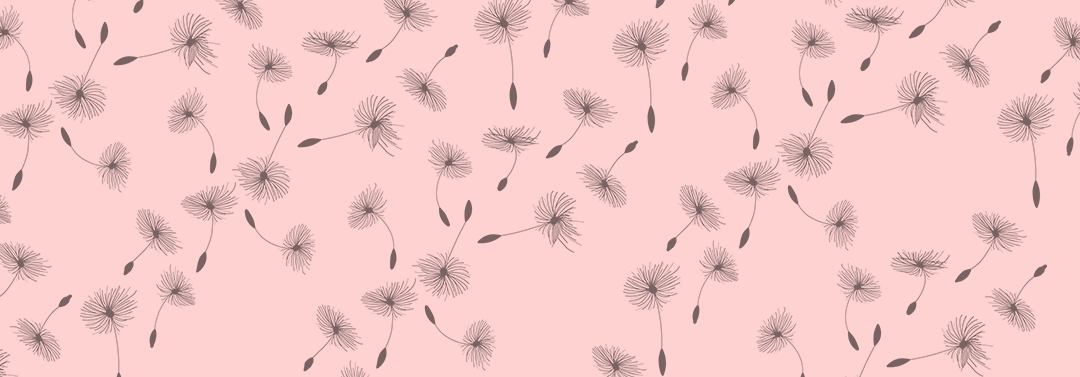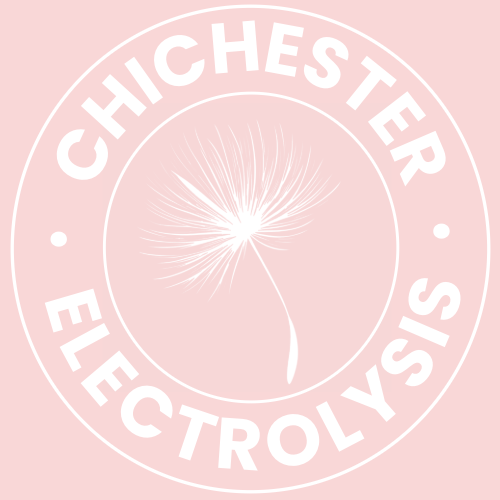Mole Reduction in Chichester, West Sussex & Portsmouth
Safe, professional mole reduction with Advanced Electrolysis
Many people have harmless moles that bother them — perhaps because they catch when shaving, rub against clothing, or simply affect how they feel about their appearance.
At Chichester Electrolysis, I offer safe mole reduction using Advanced Electrolysis, a precise treatment that gently smooths and flattens raised benign moles without cutting or surgery.
Before any treatment, the mole will need to be checked to make sure it’s safe to treat.
This can be done either through your GP or through our Map My Mole service.
There’s more about this further down the page.
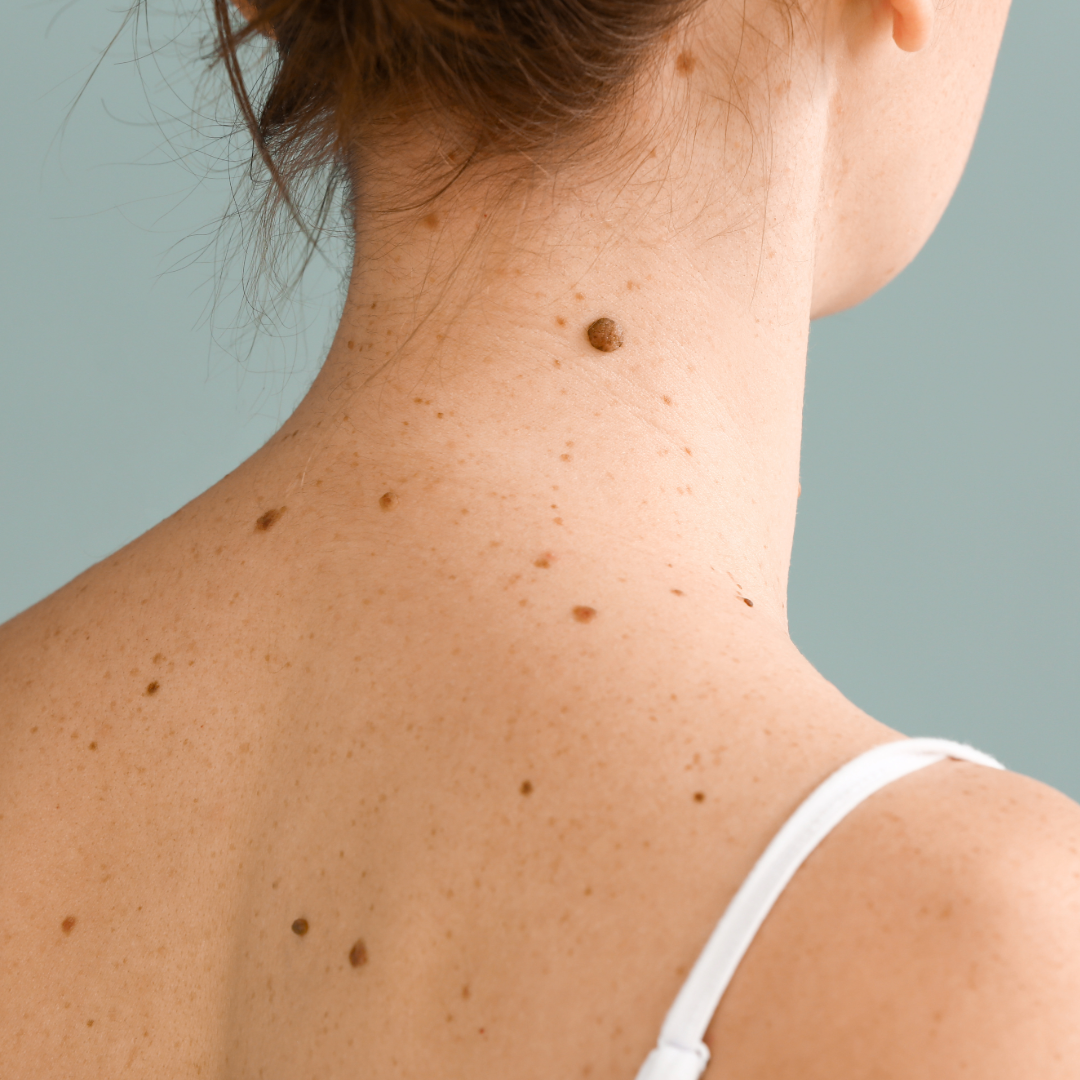
Mole Reduction in Chichester, West Sussex & Portsmouth
Safe, professional mole reduction with Advanced Electrolysis
 Many people have harmless moles that bother them — perhaps because they catch when shaving, rub against clothing, or simply affect how they feel about their appearance.
Many people have harmless moles that bother them — perhaps because they catch when shaving, rub against clothing, or simply affect how they feel about their appearance.
At Chichester Electrolysis, I offer safe mole reduction using Advanced Electrolysis, a precise treatment that gently smooths and flattens raised benign moles without cutting or surgery.
Before any treatment, the mole will need to be checked to make sure it’s safe to treat. This can be done either through your GP or through our Map My Mole service. There’s more about this further down the page.
Mole Reduction in Chichester, West Sussex & Portsmouth
Safe, professional mole reduction with Advanced Electrolysis
Many people have harmless moles that bother them — perhaps because they catch when shaving, rub against clothing, or simply affect how they feel about their appearance.
At Chichester Electrolysis, I offer safe mole reduction using Advanced Electrolysis, a precise treatment that gently smooths and flattens raised benign moles without cutting or surgery.
Before any treatment, the mole will need to be checked to make sure it’s safe to treat.
This can be done either through your GP or through our Map My Mole service.
There’s more about this further down the page.
Mole Reduction in Chichester, West Sussex & Portsmouth
Safe, professional mole reduction with Advanced Electrolysis
Many people have harmless moles that bother them — perhaps because they catch when shaving, rub against clothing, or simply affect how they feel about their appearance.
At Chichester Electrolysis, I offer safe mole reduction using Advanced Electrolysis, a precise treatment that gently smooths and flattens raised benign moles without cutting or surgery.
Before any treatment, the mole will need to be checked to make sure it’s safe to treat.
This can be done either through your GP or through our Map My Mole service.
There’s more about this further down the page.
🔹Understanding Moles
Most of us have moles, and the vast majority are completely harmless. They can appear anywhere on the body and vary in colour from light brown to almost black. Some are flat, while others are raised, and a few may have a fine hair growing from them.
Moles are simply small clusters of pigment cells known as melanocytes. Many people develop new moles during childhood or early adulthood, and it’s quite normal for their number to increase until around the age of 30–40.
Although moles are generally best left alone, some can catch on clothing, rub during shaving, or just make you feel self-conscious about their appearance. That’s when mole reduction can help — by gently smoothing and blending raised moles so they sit more comfortably and naturally on the skin.
🔹 types of mole
There are several types of mole you might notice:
Congenital Moles
These are moles you’re born with or that appear in the first couple of years of life. They’re usually small, symmetrical, and evenly coloured.
Pigmented (Common) Moles
These are the everyday moles most people have. They can vary slightly in shade depending on your skin tone and are usually round or oval in shape.
Atypical (Dysplastic) Moles
These tend to be larger and sometimes have both flat and raised areas, with irregular edges or mixed colouring. Because of these variations, it’s especially important to have them checked before any cosmetic treatment.
If you ever notice a mole that changes in shape, colour, or texture, or one that starts to itch, bleed, or look different from your others, it’s always best to have it assessed professionally before deciding on any cosmetic procedure.
🔹Understanding Moles
Most of us have moles, and the vast majority are completely harmless. They can appear anywhere on the body and vary in colour from light brown to almost black. Some are flat, while others are raised, and a few may have a fine hair growing from them.
Moles are simply small clusters of pigment cells known as melanocytes. Many people develop new moles during childhood or early adulthood, and it’s quite normal for their number to increase until around the age of 30–40.
Although moles are generally best left alone, some can catch on clothing, rub during shaving, or just make you feel self-conscious about their appearance. That’s when mole reduction can help — by gently smoothing and blending raised moles so they sit more comfortably and naturally on the skin.
🔹 types of mole
There are several types of mole you might notice:
Congenital Moles
These are moles you’re born with or that appear in the first couple of years of life. They’re usually small, symmetrical, and evenly coloured.
Pigmented (Common) Moles
These are the everyday moles most people have. They can vary slightly in shade depending on your skin tone and are usually round or oval in shape.
Atypical (Dysplastic) Moles
These tend to be larger and sometimes have both flat and raised areas, with irregular edges or mixed colouring. Because of these variations, it’s especially important to have them checked before any cosmetic treatment.
If you ever notice a mole that changes in shape, colour, or texture, or one that starts to itch, bleed, or look different from your others, it’s always best to have it assessed professionally before deciding on any cosmetic procedure.
🔹Understanding Moles
Most of us have moles, and the vast majority are completely harmless. They can appear anywhere on the body and vary in colour from light brown to almost black. Some are flat, while others are raised, and a few may have a fine hair growing from them.
Moles are simply small clusters of pigment cells known as melanocytes. Many people develop new moles during childhood or early adulthood, and it’s quite normal for their number to increase until around the age of 30–40.
Although moles are generally best left alone, some can catch on clothing, rub during shaving, or just make you feel self-conscious about their appearance. That’s when mole reduction can help — by gently smoothing and blending raised moles so they sit more comfortably and naturally on the skin.
🔹 types of mole
There are several types of mole you might notice:
Congenital Moles
These are moles you’re born with or that appear in the first couple of years of life. They’re usually small, symmetrical, and evenly coloured.
Pigmented (Common) Moles
These are the everyday moles most people have. They can vary slightly in shade depending on your skin tone and are usually round or oval in shape.
Atypical (Dysplastic) Moles
These tend to be larger and sometimes have both flat and raised areas, with irregular edges or mixed colouring. Because of these variations, it’s especially important to have them checked before any cosmetic treatment.
If you ever notice a mole that changes in shape, colour, or texture, or one that starts to itch, bleed, or look different from your others, it’s always best to have it assessed professionally before deciding on any cosmetic procedure.
🔹Understanding Moles
Most of us have moles, and the vast majority are completely harmless. They can appear anywhere on the body and vary in colour from light brown to almost black. Some are flat, while others are raised, and a few may have a fine hair growing from them.
Moles are simply small clusters of pigment cells known as melanocytes. Many people develop new moles during childhood or early adulthood, and it’s quite normal for their number to increase until around the age of 30–40.
Although moles are generally best left alone, some can catch on clothing, rub during shaving, or just make you feel self-conscious about their appearance. That’s when mole reduction can help — by gently smoothing and blending raised moles so they sit more comfortably and naturally on the skin.
🔹 types of mole
There are several types of mole you might notice:
Congenital Moles
These are moles you’re born with or that appear in the first couple of years of life. They’re usually small, symmetrical, and evenly coloured.
Pigmented (Common) Moles
These are the everyday moles most people have. They can vary slightly in shade depending on your skin tone and are usually round or oval in shape.
Atypical (Dysplastic) Moles
These tend to be larger and sometimes have both flat and raised areas, with irregular edges or mixed colouring. Because of these variations, it’s especially important to have them checked before any cosmetic treatment.
If you ever notice a mole that changes in shape, colour, or texture, or one that starts to itch, bleed, or look different from your others, it’s always best to have it assessed professionally before deciding on any cosmetic procedure.
How Advanced Electrolysis Reduces Moles
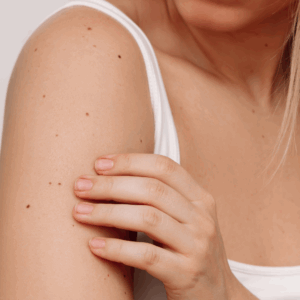
Advanced Electrolysis uses a fine probe and a precise, high-frequency electrical current to gently heat and dehydrate the cells within the mole. This controlled process causes the mole to shrink and flatten, so it appears smaller and blends more smoothly with the surrounding skin.
Because the treatment also affects pigment cells, the mole may appear lighter in colour at first. As the skin heals, natural pigmentation gradually rebalances, and the area continues to blend in over the following weeks.
Depending on the size and depth of the mole, one or more sessions may be needed for the best cosmetic result. After treatment, the area may appear slightly white before a tiny scab forms — this should be left to fall away naturally. Over the following weeks, the skin tone and texture even out, revealing a clearer, smoother finish.
To support healing, it’s best to keep the area clean, avoid touching or picking the scab, and apply the recommended aftercare product until the skin fully settles. Most people find any redness fades within a few days, with the skin continuing to refine in appearance over the following weeks.
How Advanced Electrolysis Reduces Moles

Advanced Electrolysis uses a fine probe and a precise, high-frequency electrical current to gently heat and dehydrate the cells within the mole. This controlled process causes the mole to shrink and flatten, so it appears smaller and blends more smoothly with the surrounding skin.
Because the treatment also affects pigment cells, the mole may appear lighter in colour at first. As the skin heals, natural pigmentation gradually rebalances, and the area continues to blend in over the following weeks.
Depending on the size and depth of the mole, one or more sessions may be needed for the best cosmetic result. After treatment, the area may appear slightly white before a tiny scab forms — this should be left to fall away naturally. Over the following weeks, the skin tone and texture even out, revealing a clearer, smoother finish.
To support healing, it’s best to keep the area clean, avoid touching or picking the scab, and apply the recommended aftercare product until the skin fully settles. Most people find any redness fades within a few days, with the skin continuing to refine in appearance over the following weeks.
How Advanced Electrolysis Reduces Moles

Advanced Electrolysis uses a fine probe and a precise, high-frequency electrical current to gently heat and dehydrate the cells within the mole. This controlled process causes the mole to shrink and flatten, so it appears smaller and blends more smoothly with the surrounding skin.
Because the treatment also affects pigment cells, the mole may appear lighter in colour at first. As the skin heals, natural pigmentation gradually rebalances, and the area continues to blend in over the following weeks.
Depending on the size and depth of the mole, one or more sessions may be needed for the best cosmetic result. After treatment, the area may appear slightly white before a tiny scab forms — this should be left to fall away naturally. Over the following weeks, the skin tone and texture even out, revealing a clearer, smoother finish.
To support healing, it’s best to keep the area clean, avoid touching or picking the scab, and apply the recommended aftercare product until the skin fully settles. Most people find any redness fades within a few days, with the skin continuing to refine in appearance over the following weeks.
How Advanced Electrolysis Reduces Moles

Advanced Electrolysis uses a fine probe and a precise, high-frequency electrical current to gently heat and dehydrate the cells within the mole. This controlled process causes the mole to shrink and flatten, so it appears smaller and blends more smoothly with the surrounding skin.
Because the treatment also affects pigment cells, the mole may appear lighter in colour at first. As the skin heals, natural pigmentation gradually rebalances, and the area continues to blend in over the following weeks.
Depending on the size and depth of the mole, one or more sessions may be needed for the best cosmetic result. After treatment, the area may appear slightly white before a tiny scab forms — this should be left to fall away naturally. Over the following weeks, the skin tone and texture even out, revealing a clearer, smoother finish.
To support healing, it’s best to keep the area clean, avoid touching or picking the scab, and apply the recommended aftercare product until the skin fully settles. Most people find any redness fades within a few days, with the skin continuing to refine in appearance over the following weeks.
Before Treatment — Confirming the Mole is Safe to Treat
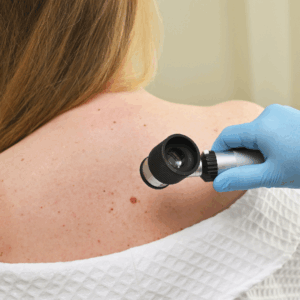
Before any mole reduction treatment commences, I’ll need confirmation that the mole is safe and suitable for treatment. There are two simple ways to do this, depending on what feels right for you.
Through your GP and NHS Dermatologist – You can see your GP, who may examine the mole and, if needed, refer you to an NHS dermatologist. This route is free but can sometimes involve a waiting period before you’re seen.
Through Map My Mole – If you’d prefer faster reassurance, I can carry out a dermoscopic mole check using Map My Mole. The Map My Mole service I use is the same trusted dermatologist review system used by clinics nationwide, providing professional confirmation that your mole is safe for treatment. You can find out more about this service on my Mole & Blemish Diagnostic page. High-quality images are reviewed by a UK consultant dermatologist, and a detailed report is returned within 48 hours. If the dermatologist confirms the mole is harmless, we can safely go ahead with reducing it.
This gives you expert peace of mind and avoids unnecessary waiting times — while keeping everything fully compliant with professional and insurance standards.
Before Treatment — Confirming the Mole is Safe to Treat

Before any mole reduction treatment commences, I’ll need confirmation that the mole is safe and suitable for treatment. There are two simple ways to do this, depending on what feels right for you.
Through your GP and NHS Dermatologist – You can see your GP, who may examine the mole and, if needed, refer you to an NHS dermatologist. This route is free but can sometimes involve a waiting period before you’re seen.
Through Map My Mole – If you’d prefer faster reassurance, I can carry out a dermoscopic mole check using Map My Mole. The Map My Mole service I use is the same trusted dermatologist review system used by clinics nationwide, providing professional confirmation that your mole is safe for treatment. You can find out more about this service on my Mole & Blemish Diagnostic page. High-quality images are reviewed by a UK consultant dermatologist, and a detailed report is returned within 48 hours. If the dermatologist confirms the mole is harmless, we can safely go ahead with reducing it.
This gives you expert peace of mind and avoids unnecessary waiting times — while keeping everything fully compliant with professional and insurance standards.
Before Treatment — Confirming the Mole is Safe to Treat

Before any mole reduction treatment commences, I’ll need confirmation that the mole is safe and suitable for treatment. There are two simple ways to do this, depending on what feels right for you.
Through your GP and NHS Dermatologist – You can see your GP, who may examine the mole and, if needed, refer you to an NHS dermatologist. This route is free but can sometimes involve a waiting period before you’re seen.
Through Map My Mole – If you’d prefer faster reassurance, I can carry out a dermoscopic mole check using Map My Mole. The Map My Mole service I use is the same trusted dermatologist review system used by clinics nationwide, providing professional confirmation that your mole is safe for treatment. You can find out more about this service on my Mole & Blemish Diagnostic page. High-quality images are reviewed by a UK consultant dermatologist, and a detailed report is returned within 48 hours. If the dermatologist confirms the mole is harmless, we can safely go ahead with reducing it.
This gives you expert peace of mind and avoids unnecessary waiting times — while keeping everything fully compliant with professional and insurance standards.
Before Treatment — Confirming the Mole is Safe to Treat

Before any mole reduction treatment commences, I’ll need confirmation that the mole is safe and suitable for treatment. There are two simple ways to do this, depending on what feels right for you.
Through your GP and NHS Dermatologist – You can see your GP, who may examine the mole and, if needed, refer you to an NHS dermatologist. This route is free but can sometimes involve a waiting period before you’re seen.
Through Map My Mole – If you’d prefer faster reassurance, I can carry out a dermoscopic mole check using Map My Mole. The Map My Mole service I use is the same trusted dermatologist review system used by clinics nationwide, providing professional confirmation that your mole is safe for treatment. You can find out more about this service on my Mole & Blemish Diagnostic page. High-quality images are reviewed by a UK consultant dermatologist, and a detailed report is returned within 48 hours. If the dermatologist confirms the mole is harmless, we can safely go ahead with reducing it.
This gives you expert peace of mind and avoids unnecessary waiting times — while keeping everything fully compliant with professional and insurance standards.
Why Choose Advanced Electrolysis for Mole Reduction
Advanced Electrolysis
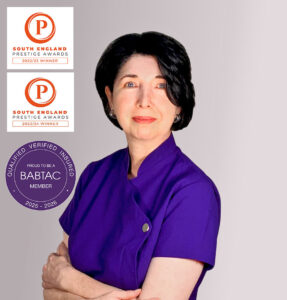
✓ Precise & targeted – Treats only the mole without affecting surrounding skin.
✓ Minimally invasive – No cutting, no stitching, no harsh chemicals.
✓ Natural healing – The skin settles and blends over time for a smoother, even finish.
✓ Fully compliant – All moles are checked and confirmed safe before treatment.
✔ Treatment safety – All mole reduction treatments are carried out only after confirmation that the mole is safe for treatment. This can be done either through your GP or via my Map My Mole service, where high-quality dermoscopic images are reviewed by a UK consultant dermatologist. Both options ensure complete peace of mind before any treatment begins.
Prices for Mole reduction
Consultation and Safety Check
✔ Initial Consultation & Mole Check (Map My Mole Service) – £80
Includes a dermoscopic examination, high-quality imaging, and a full report from a UK consultant dermatologist within 48 hours.
✔ Additional Mole Checks – £40 per mole
| Treatment Time | Price | Best For |
|---|---|---|
| ✔ 15 minutes | £45 | Ideal for one or several small moles |
| ✔ 30 minutes | £90 | Multiple moles |
| ✔ 45 minutes | £135 | Larger area / multiple moles |
| ✔ 60 minutes | £172 | Extensive treatment / multiple moles |
Pricing is based on treatment time, not the number of moles. The aim is to complete as much work as possible within your chosen appointment time. Most small raised moles can be reduced within a 15-minute session.
Why Choose Advanced Electrolysis for Mole Reduction
Advanced Electrolysis

✓ Precise & targeted – Treats only the mole without affecting surrounding skin.
✓ Minimally invasive – No cutting, no stitching, no harsh chemicals.
✓ Natural healing – The skin settles and blends over time for a smoother, even finish.
✓ Fully compliant – All moles are checked and confirmed safe before treatment.
✔ Treatment safety – All mole reduction treatments are carried out only after confirmation that the mole is safe for treatment. This can be done either through your GP or via my Map My Mole service, where high-quality dermoscopic images are reviewed by a UK consultant dermatologist. Both options ensure complete peace of mind before any treatment begins.
Prices for Mole reduction
Consultation and Safety Check
✔ Initial Consultation & Mole Check (Map My Mole Service) – £80
Includes a dermoscopic examination, high-quality imaging, and a full report from a UK consultant dermatologist within 48 hours.
✔ Additional Mole Checks – £40 per mole
| Treatment Time | Price | Best For |
|---|---|---|
| ✔ 15 minutes | £45 | Ideal for one or several small moles |
| ✔ 30 minutes | £90 | Multiple moles |
| ✔ 45 minutes | £135 | Larger area / multiple moles |
| ✔ 60 minutes | £172 | Extensive treatment / multiple moles |
Pricing is based on treatment time, not the number of moles. The aim is to complete as much work as possible within your chosen appointment time. Most small raised moles can be reduced within a 15-minute session.
Why Choose Advanced Electrolysis for Mole Reduction
Advanced Electrolysis

✓ Precise & targeted – Treats only the mole without affecting surrounding skin.
✓ Minimally invasive – No cutting, no stitching, no harsh chemicals.
✓ Natural healing – The skin settles and blends over time for a smoother, even finish.
✓ Fully compliant – All moles are checked and confirmed safe before treatment.
✔ Treatment safety – All mole reduction treatments are carried out only after confirmation that the mole is safe for treatment. This can be done either through your GP or via my Map My Mole service, where high-quality dermoscopic images are reviewed by a UK consultant dermatologist. Both options ensure complete peace of mind before any treatment begins.
Prices for Mole reduction
Consultation and Safety Check
✔ Initial Consultation & Mole Check (Map My Mole Service) – £80
Includes a dermoscopic examination, high-quality imaging, and a full report from a UK consultant dermatologist within 48 hours.
✔ Additional Mole Checks – £40 per mole
| Treatment Time | Price | Best For |
|---|---|---|
| ✔ 15 minutes | £45 | Ideal for one or several small moles |
| ✔ 30 minutes | £90 | Multiple moles |
| ✔ 45 minutes | £135 | Larger area / multiple moles |
| ✔ 60 minutes | £172 | Extensive treatment / multiple moles |
Pricing is based on treatment time, not the number of moles. The aim is to complete as much work as possible within your chosen appointment time. Most small raised moles can be reduced within a 15-minute session.
Why Choose Advanced Electrolysis for Mole Reduction
Advanced Electrolysis

✓ Precise & targeted – Treats only the mole without affecting surrounding skin.
✓ Minimally invasive – No cutting, no stitching, no harsh chemicals.
✓ Natural healing – The skin settles and blends over time for a smoother, even finish.
✓ Fully compliant – All moles are checked and confirmed safe before treatment.
✔ Treatment safety – All mole reduction treatments are carried out only after confirmation that the mole is safe for treatment. This can be done either through your GP or via my Map My Mole service, where high-quality dermoscopic images are reviewed by a UK consultant dermatologist. Both options ensure complete peace of mind before any treatment begins.
Prices for Mole reduction
Consultation and Safety Check
✔ Initial Consultation & Mole Check (Map My Mole Service) – £80
Includes a dermoscopic examination, high-quality imaging, and a full report from a UK consultant dermatologist within 48 hours.
✔ Additional Mole Checks – £40 per mole
| Treatment Time | Price | Best For |
|---|---|---|
| ✔ 15 minutes | £45 | Ideal for one or several small moles |
| ✔ 30 minutes | £90 | Multiple moles |
| ✔ 45 minutes | £135 | Larger area / multiple moles |
| ✔ 60 minutes | £172 | Extensive treatment / multiple moles |
Pricing is based on treatment time, not the number of moles. The aim is to complete as much work as possible within your chosen appointment time. Most small raised moles can be reduced within a 15-minute session.
🔹 Book Your mole Reduction Today!
If you’ve noticed a mole that’s changed, feels raised, or simply makes you self-conscious, I offer a calm, professional space where you can have it checked and, if suitable, safely reduced.
To arrange a free consultation or discuss your options, please get in touch using the contact details below.
📞 Call 07434 865 389
📧 Email leahelectrolysis@gmail.com
📌 Not sure if advanced electrolysis is right for you?
👉 Book a Free Consultation Here
🔹 Book Your mole Reduction Today!
If you’ve noticed a mole that’s changed, feels raised, or simply makes you self-conscious, I offer a calm, professional space where you can have it checked and, if suitable, safely reduced.
To arrange a free consultation or discuss your options, please get in touch using the contact details below.
📞 Call 07434 865 389
📧 Email leahelectrolysis@gmail.com
📌 Not sure if advanced electrolysis is right for you?
👉 Book a Free Consultation Here
🔹 Book Your mole Reduction Today!
If you’ve noticed a mole that’s changed, feels raised, or simply makes you self-conscious, I offer a calm, professional space where you can have it checked and, if suitable, safely reduced.
To arrange a free consultation or discuss your options, please get in touch using the contact details below.
📞 Call 07434 865 389
📧 Email leahelectrolysis@gmail.com
📌 Not sure if advanced electrolysis is right for you?
👉 Book a Free Consultation Here
🔹 Book Your mole Reduction Today!
If you’ve noticed a mole that’s changed, feels raised, or simply makes you self-conscious, I offer a calm, professional space where you can have it checked and, if suitable, safely reduced.
To arrange a free consultation or discuss your options, please get in touch using the contact details below.
📞 Call 07434 865 389
📧 Email leahelectrolysis@gmail.com
📌 Not sure if advanced electrolysis is right for you?
👉 Book a Free Consultation Here
